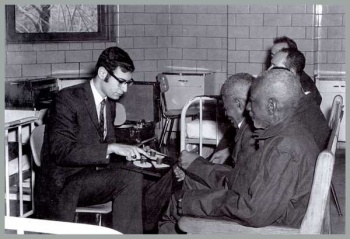Difference between revisions of "Portal:Featured Image Of The Week"
From Asylum Projects
M-Explorer (talk | contribs) |
M-Explorer (talk | contribs) |
||
| Line 1: | Line 1: | ||
{{FIformat | {{FIformat | ||
| − | |Image= | + | |Image= Byberry3pl1.jpg |
|Width= 350px | |Width= 350px | ||
| − | |Body= [[ | + | |Body= In 1903 the city of Philadelphia purchased farmland in it's northeast section, [[Philadelphia State Hospital|known as "Byberry"]], for its city-run farm called "Byberry Farms", which supplied food for public institutions. Shortly after the purchase of the land, six inmates from the overcrowded Blockley Almshouse were chosen to work at the farms. By 1906, Byberry Farms consisted of several small wooden buildings built as temporary dormitories by the growing patient population, housing approximately thirty patients who had been moved from the heavily overcrowded Blockley. |
}} | }} | ||
Revision as of 02:57, 29 October 2012
Featured Image Of The Week
In 1903 the city of Philadelphia purchased farmland in it's northeast section, known as "Byberry", for its city-run farm called "Byberry Farms", which supplied food for public institutions. Shortly after the purchase of the land, six inmates from the overcrowded Blockley Almshouse were chosen to work at the farms. By 1906, Byberry Farms consisted of several small wooden buildings built as temporary dormitories by the growing patient population, housing approximately thirty patients who had been moved from the heavily overcrowded Blockley.
